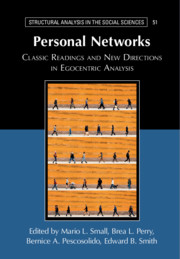III - Later Foundations
Published online by Cambridge University Press: 01 October 2021
Summary

- Type
- Chapter
- Information
- Personal NetworksClassic Readings and New Directions in Egocentric Analysis, pp. 211 - 552Publisher: Cambridge University PressPrint publication year: 2021

